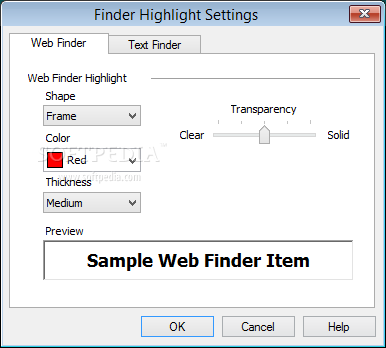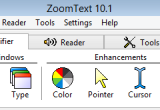
Feel free to experiment with both modes of operation to find what suits you best. When you move your finger off of the icon, the previous touch mode is automatically restored. You can momentarily switch touch modes by holding one finger on the touch icon. You'll see the icon change from an icon resembling the Windows 8 start screen for Windows Touch Mode, to a large Z icon for ZoomText Touch Mode.

To switch between touch modes, simply double-tap the Touch Icon with one finger. You will need to be in this mode in order to access ZoomText's features that are supported by gestures. On the other hand, ZoomText Touch Mode passes all touch gestures to ZoomText. By default, you will be in Windows Touch Mode, where all of your touch gestures are passed to Windows and applications that are open on screen, just as if ZoomText was not running on the system. You can even customize the size and color of the touch icon by going to the ZoomText Settings menu and clicking "Touch Screen Support." The Touch Icon has 2 modes of operation: Windows Touch Mode and ZoomText Touch Mode. This lets you position the icon exactly where you'd like it to be on screen, and allows you to move it if the icon is covering an item you need to see. You can move the icon to several anchor points along the edges of your screen.

This floating icon remains visible even when you adjust the zoom level or scroll the magnified view. The first thing you'll notice when using ZoomText 10.1 on a touch screen device is the ZoomText Touch Icon in the upper left hand corner. This means that you can interact with the Windows desktop and your applications, as well as access ZoomText features using touch screen gestures. This new version of ZoomText can be used on touch screen devices including tablets, laptops and desktop monitors that are equipped with Windows 8.

Hello and welcome to this introductory video for ZoomText 10.1 for Windows 8.


 0 kommentar(er)
0 kommentar(er)
